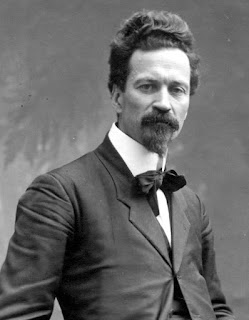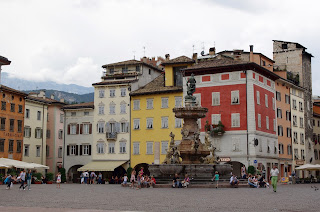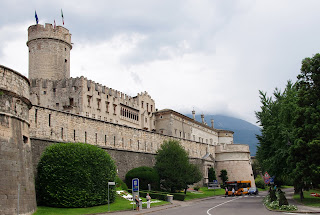Former partisan became Italy’s first female cabinet minister
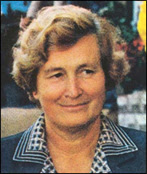 |
| Tina Anselmi was the first Italian woman to hold a position inside an Italian cabinet |
Anselmi was chosen as Minister for Labour and Social Security and then Minister for Health in the government led by Giulio Andreotti from 1976 to 1979.
In 1981, she became the first woman to lead a public inquiry in Italy when she was asked to head the commission looking into the clandestine and illegal P2 masonic lodge, which had among its members prominent journalists, members of parliament, industrialists, and military leaders and was suspected of involvement in many scandals in pursuit of an ultra-right agenda.
Anselmi’s political views were heavily influenced by her upbringing in the Veneto during the years of Mussolini and war. She was from a comfortable background - her father was a pharmacist in Castelfranco Veneto, while her mother ran an osteria with her grandmother - but became aware of the threat to freedom posed by the Fascist system when he father was persecuted by Mussolini’s supporters for expressing socialist views.
 |
| The Via dei Martiri in Bassano del Grappa celebrates the memory of the massacred partisans |
The executions were intended to strike fear into anyone thinking of joining the growing resistance movement. On Anselmi, it had the opposite effect.
Under the nom de guerre Gabriella, she became a courier for the partisans, making journeys by bicycle of up to 70 miles (113km) a day on behalf of the Cesare Battisti brigade - named after the Italian patriot hanged by the Austrians in 1916 - smuggling weapons and ammunition and delivering messages.
It was extremely dangerous work. Her commander had told her that if she were caught, the best she could hope for was that she would be killed at once.
The experience made her understand what democracy meant and she resolved to spend her life defending the values it enshrined and the rights of the individual, especially those of women.
When the Second World War had ended, she studied literature at the Catholic University of Milan and became a primary school teacher. She held positions in Christian trade unions, including the primary teachers' union from 1948-55.
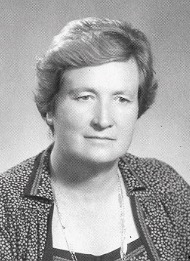 |
| Anselmi chaired the inquiry into the illegal P2 masonic lodge |
Re-elected five times as a deputy for the Venice-Treviso district, Anselmi served three times as under-secretary to the Department of Work and Social Services, and in 1976 she became the first woman to be a member of an Italian cabinet.
She is best known for having been the main proposer of Italian laws on equal opportunities. She passed a bill which recognised fathers as primary caregivers for their children and supported legislation on gender parity in employment conditions. She played a significant role in the introduction of Italy's National Health Service.
Throughout her career, Anselmi earned respect as a straight-talking campaigner, but also as a politician whose first thought was for her responsibility to the public, rather than the direction of her career.
When she was appointed to lead the P2 enquiry, it soon became clear that she had every intention of disturbing the established order and with so many high-profile and well-connected individuals under suspicion she found herself variously followed, threatened - dynamite was found at her house in Rome - and spied on as part of several attempts to warn her off.
Yet after four years and almost 500 sessions, the inquiry reported in 1984 and concluded that P2’s network of power represented a clear threat to democracy. It was a triumph for Anselmi, although much to her frustration and disappointment, her proposed reforms were left to gather dust.
In the broader picture, however, the work of Anselmi’s commission was an important part of the process of exposing corruption in the Italian political system, which would reach a conclusion a decade later with the dismantling of both the Christian Democrats and the Italian Socialist Party, along with the Social Democrats and the Liberals, with new groups emerging in their place.
After her retirement, Anselmi was mooted as a potential candidate for the presidency of Italy, although ill health counted against her. She died in Castelfranco in 2016 at the age of 89.
Travel tip:
Bassano del Grappa is an historic town at the foot of Monte Grappa in the Vicenza province of the Veneto, famous for inventing grappa, a spirit made from the grape skins and stalks left over from wine production, which is popular with Italians as an after dinner drink to aid digestion. The town’s main attraction is the Ponte degli Alpini, also known as the Ponte Vecchio, a bridge across the Brenta river designed in 1569 by Andrea Palladio. It has been rebuilt several times after being damaged or destroyed by wars but always to the original design. The painter Jacopo Bassano was born in Bassano del Grappa and took his name from the town.
Hotels in Bassano del Grappa by Booking.com
Travel tip:
Castelfranco Veneto, a small town midway between Treviso and Vicenza in the Veneto region, is notable for its fortified old city, which lies at the centre of the town surrounded by high walls and a moat. Inside are a number of streets and the old city’s Duomo, which contains an altarpiece by the town’s most famous son, the High Renaissance artist Giorgione, thought to have been painted between 1503 and 1504. Next to the Duomo is the Casa Giorgione, thought to have been the artist’s home, which is now a museum.
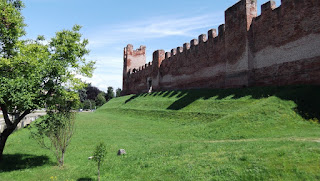 |
| The walls of Castelfranco Veneto have been providing protection for the old city since 1211 |
Castelfranco Veneto, a small town midway between Treviso and Vicenza in the Veneto region, is notable for its fortified old city, which lies at the centre of the town surrounded by high walls and a moat. Inside are a number of streets and the old city’s Duomo, which contains an altarpiece by the town’s most famous son, the High Renaissance artist Giorgione, thought to have been painted between 1503 and 1504. Next to the Duomo is the Casa Giorgione, thought to have been the artist’s home, which is now a museum.
Search Tripadvisor for a hotel in Castelfranco Veneto
More reading:
How Giulio Andreotti became the great political survivor
Which names were on the P2 list?
Cesare Battisti - the patriot who fought to reclaim Trentino from Austrian rule
Also on this day:
1541: The birth of Francesco I, the Florentine ruler at the heart of a Medici murder mystery
1940: The birth of pop singer Mina, Italy's all-time best-selling female recording artist
Home
More reading:
How Giulio Andreotti became the great political survivor
Which names were on the P2 list?
Cesare Battisti - the patriot who fought to reclaim Trentino from Austrian rule
Also on this day:
1541: The birth of Francesco I, the Florentine ruler at the heart of a Medici murder mystery
1940: The birth of pop singer Mina, Italy's all-time best-selling female recording artist
Home

